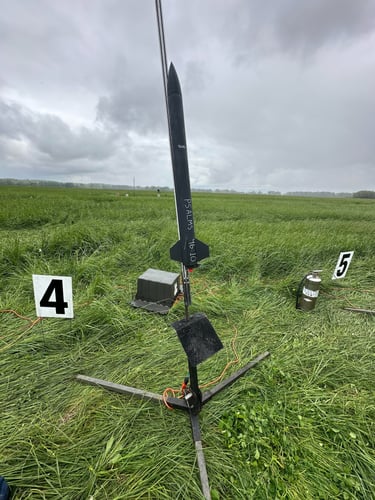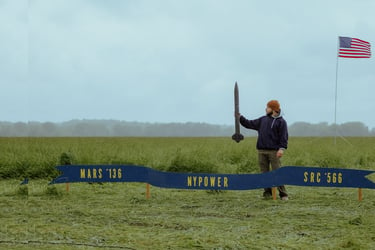L1 Certification — Road to Starship
Successfully Building and Launching L1 Certification
Isaac Vasquez
6/24/20252 min read
Psalm 46:10 — "Be still, and know that I am God: I will be exalted among the heathen, I will be exalted in the earth"
There’s no hiding the fact that rocket science is a branch of engineering that demands critical thinking, not just from a first principles standpoint, but from a manufacturing and regulatory perspective as well. Whether it's designing materials that can withstand the aerodynamic stress and thermodynamics of reentry, or making design decisions from a DFMA (Design for Manufacturing and Assembly) standpoint, rocket science is drenched in complexities. Many of which require dedicated individuals grounded in the truth found in math and science.
With ambitions to one day work for a team doing exactly that, I found myself wanting to get hands-on experience by going through the full engineering process. The process from ideation to launch and recovery on a model rocket seemed to be a good starting point. Using the NAR High-Powered Certification Levels (L1–L3) as my framework, my long-term goal is to eventually attempt a scale model of a Starship-like launch system where rapid reusability is the crux of it all.
On May 24, 2025 I successfully launched and recovered a NAR grade L1 high-powered rocket.
Body Dimensions | Motor Specifications were as follows:
Height: 44"
Weight: 2.446 lbs
Outer Diameter: 3.1"
Inner Diameter: 2.975"
Apogee: ~2500 ft
Motor Selection: Aerotech DMS H195NT-14A New Blue Thunder
Total Impulse: 236 N-sec (53.1 lb-sec)
Peak Thrust: 254 N (57 lbs)
Delay Time: 14s Max (adjusted to slightly under 9 as per simulations
Material: Uline cardboard body, 1/8" plywood bulkheads, 1/4" plywood aft fins
Goal: Successfully launch and recover my model rocket for L1 NAR Certification
Mission Outcome: Successful Launch (2x) | Successful Recovery (2x) | Successful Post-Flight Inspection (1x)
Lessons Learned:
Zippering is a common failure mode with cardboard or weaker materials, where the shock cord rips through the body tube during deployment (hence the name). This usually happens due to a late ejection charge. A simple fix? Add soft foam rim protection to the body tube’s edge to cushion the impact.
Parachute sizing matters. Larger parachutes lead to longer descent times, which can mean the rocket lands farther away—sometimes much farther. A smaller parachute will speed up descent and usually lead to a closer (and safer) recovery.
Avoid black paint jobs. I intend to include GPS in all future rockets, but for any future L1 builds, I strongly recommend avoiding black (or camo) finishes. Trust me—visibility matters.
Tuning delay charges matters as you want detonation at apogee in efforts to minimize a RUD occurring.
Favorite Memory: After my second L1 launch, a member of the MARS program overseeing the NAR event noticed Psalm 46:10 written on the side of my rocket. He paused, read it aloud—"Psalm 46:10"—then walked away as my certifier finalized the paperwork. A few moments later, he returned with tears in his eyes and asked, “Can I take a picture of it?” Then he read aloud, “'Be still and know that I am God.’ You have no idea how much I needed to see that.”
I reached out, gave him a hug, and said, “That’s what it’s all about. Praise God.”
After he walked away, I turned to my brother, who had witnessed the whole thing, and said, “Everything today—the hiccups, the delays—it all had to happen for that moment. So God could use a model rocket to speak to that man and remind him of His Word.”
I don’t know every reader who might come across this blog post. But the God I serve?
He is super crafty and loves you!
















